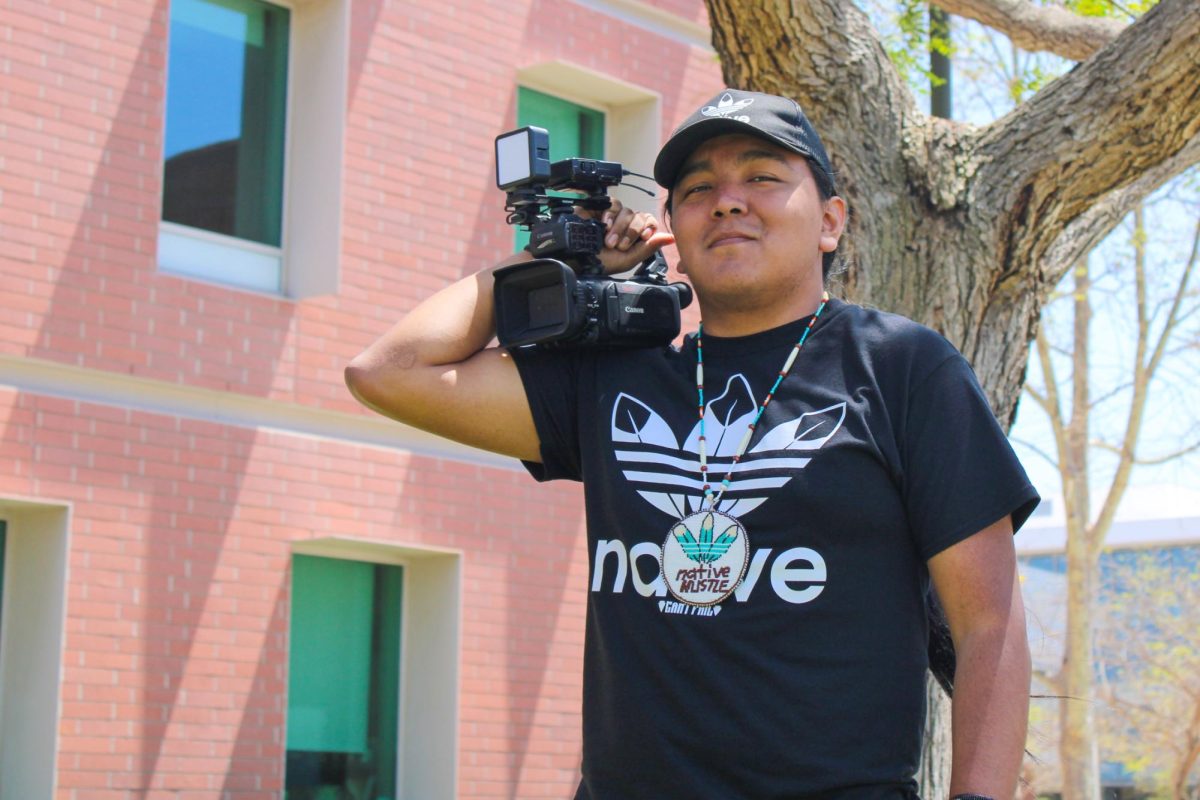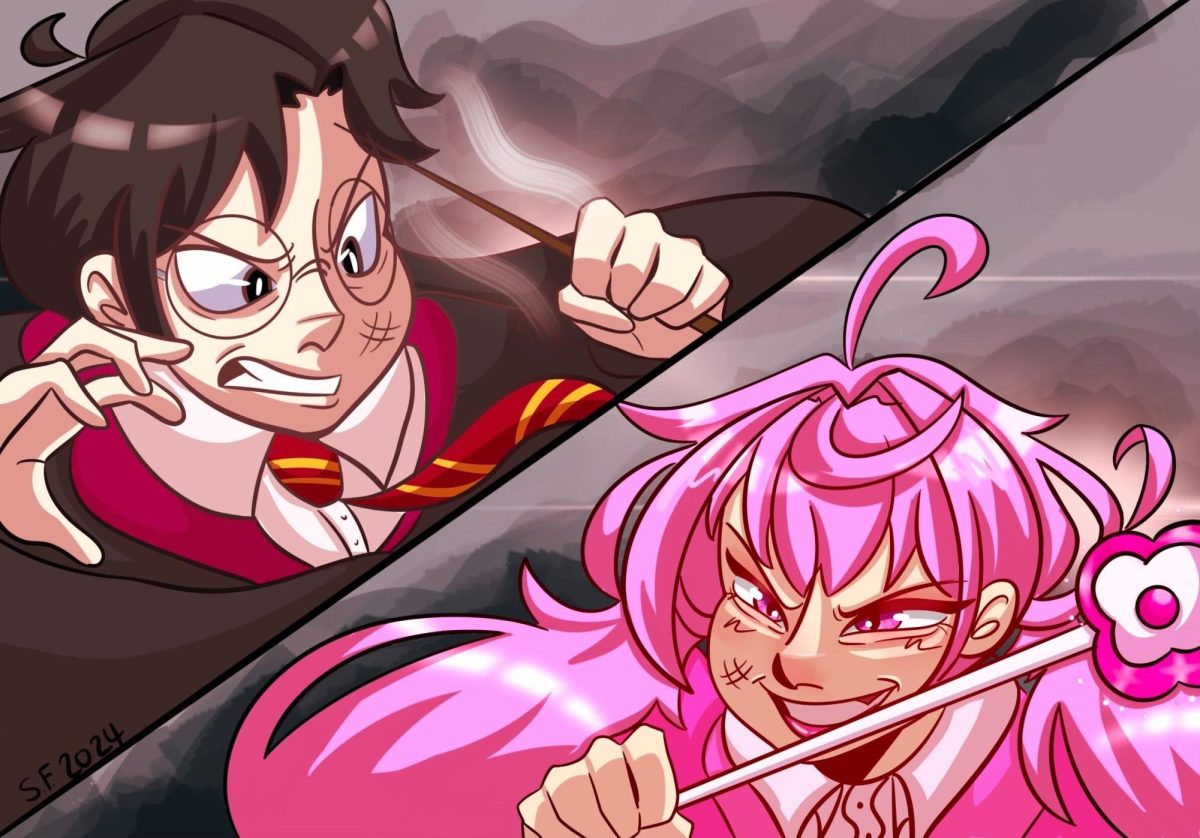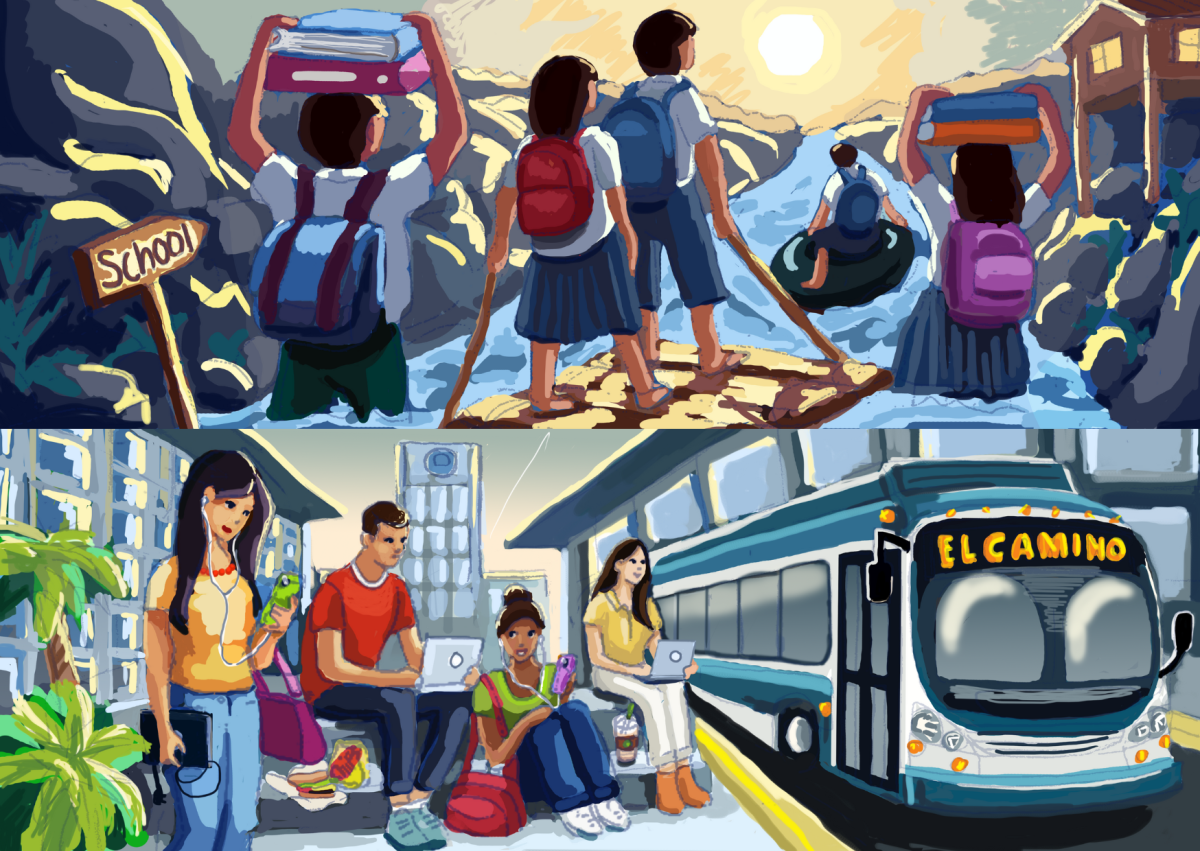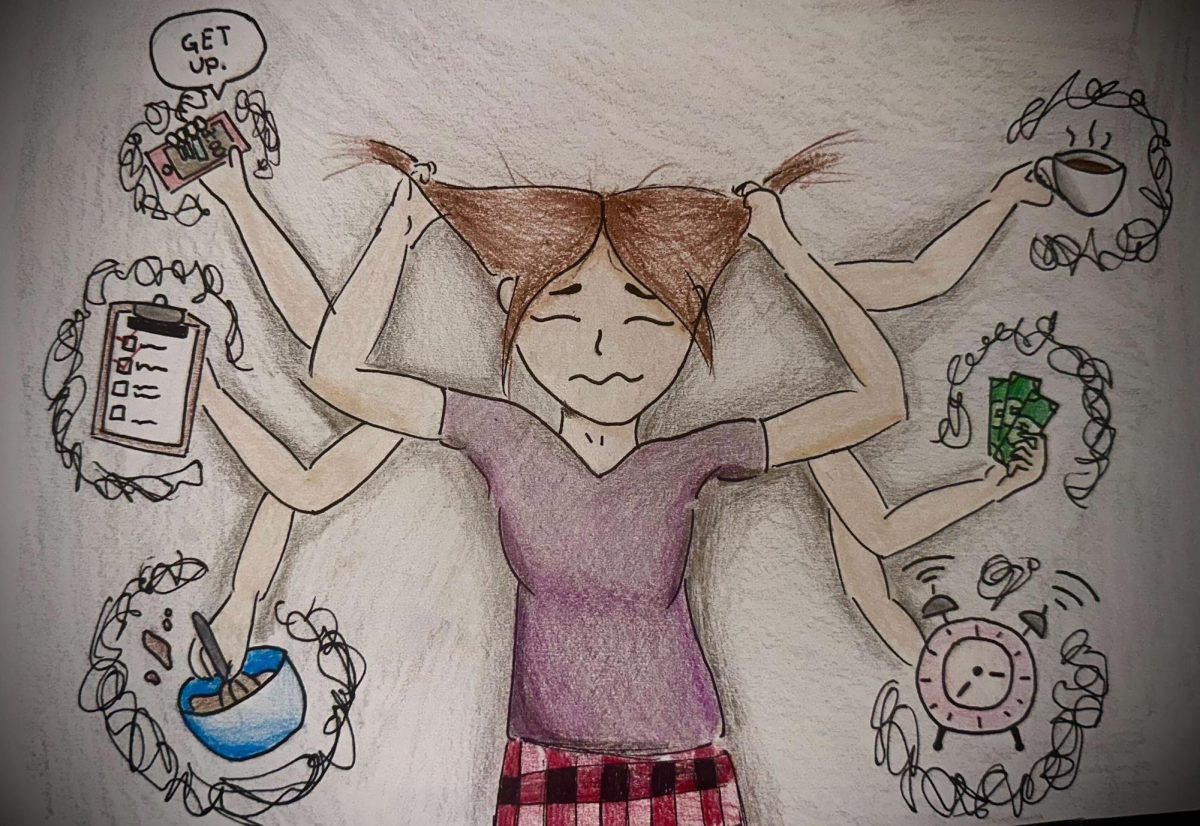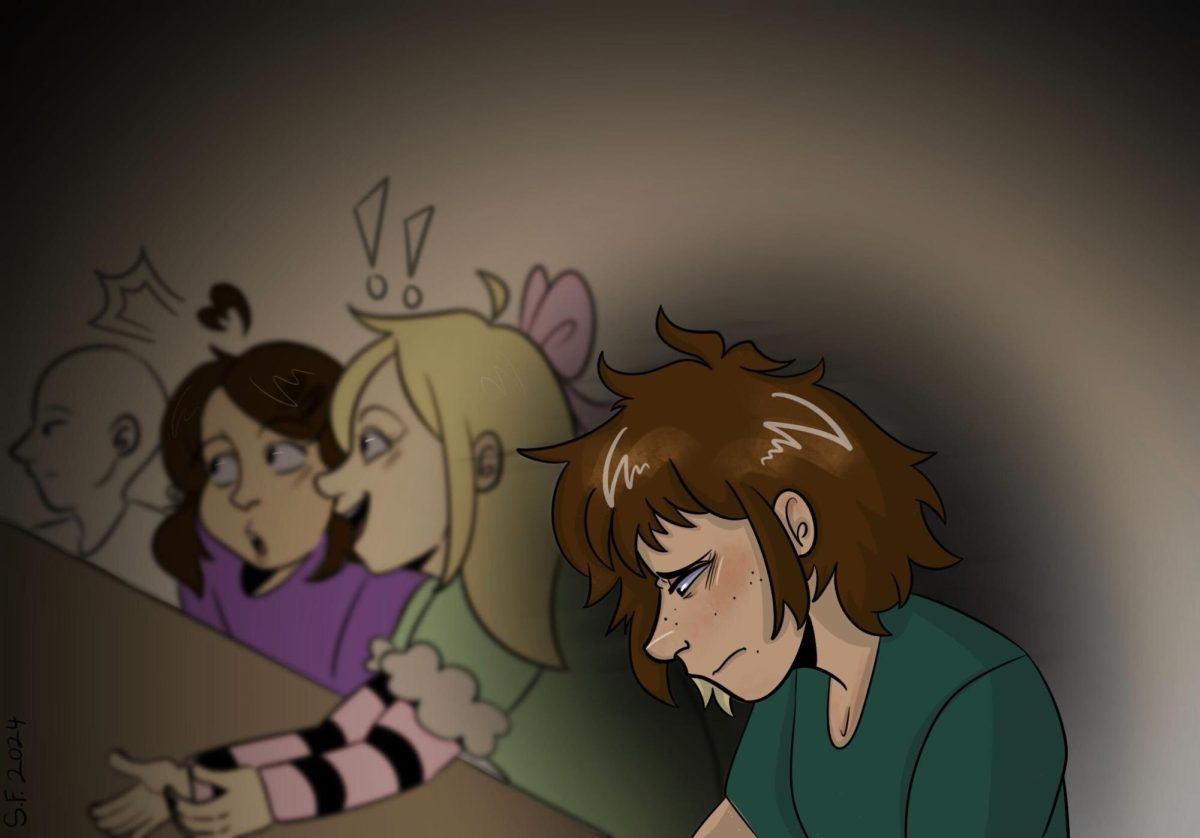As the warm California sun beats down and a cool breeze is felt, the sound of drums and shell shakers fills the air.
Two circles of people fill the vast grass space outside of California State University Dominguez Hills’ Lacorte Hall.
The outer circle is made up of an abundance of bright tented booths with vendors selling handmade jewelry, food and clothing of all kinds, with the inner circle made up of people standing and sitting.
The inner circle acts as an audience as they peer into the center where people of varying ages are dressed in vibrant Native American regalia and are performing traditional routines.
As the performance goes on, 20-year-old Native American Tyler Notah finds himself occupied by the outer circle.
Wearing black pants and a black shirt, with his long, thick black hair tied back into a ponytail, finished off with a black baseball cap, he jumps from booth to booth looking for a vendor who is willing to participate in his latest skit.
Attending between 20 to 25 Native American pow-wows a year, searching for content and participants has become a routine for the content creator.
Notah creates his content by interviewing various Native American business owners, family, and friends at pow-wows.
He wants to share their stories and advocate for their heritage.
With a growing TikTok page of over 44,000 followers, a passion for creating short films, hosting a podcast, and studying film at El Camino, his journey as a content creator is in full swing.

“Comedic-type interviews are what I look for because it’s a good way to discuss what’s going on, and you’re shining a light on that in a positive way,” Notah said.
The interviews, along with other comedic content are then posted on Notah’s social media platforms.
Growing up in the predominantly white city of Redondo Beach, where the United States Census reported the population being 55.5% white, Notah has lived a very different life experience than his parents and grandparents.
The latter are survivors of Native American boarding schools and reservations. Upon realizing his knowledge of his culture was limited, he began to seek stories, which in turn revealed dark and disheartening responses.
“My grandparents were part of the urban relocation program, where the government would get small groups of Native American individuals and offer them work and homes off the reservation. What people didn’t know was that the real goal was to disconnect the culture from the families,” Notah said.
Knowing his family was not the only one to experience these unfortunate circumstances, Notah took it upon himself to educate himself and others of the Native American heritage through the form of content creation.
His passion for creating began at a young age. His father, Harrelson Notah, said his son’s journey started with a Lego app used for still pictures.
“I would come home in the evenings and his little still picture of these Lego movements started to evolve and get bigger, almost like movie making,” Harrelson Notah said.
Recognizing that creating digital content was something his son enjoyed, Notah’s Christmas present that year was a $99 black camera bought on Black Friday.
A little went a long way, as shortly after receiving that camera, Notah’s journey to content creation began to unfold.
He taught himself how to use software, including Adobe Premiere Pro, along with other equipment that helped him evolve his skills and eventually led him to create the content he posts today.
His route of advocating for his heritage through a digital platform was inspired by the 2010 era of YouTube gamers and vloggers.

Notah said he realized he wanted to create content professionally in middle school due to consuming the content of YouTube groups including FaZe Clan.
“They [FaZe Clan] were all from different aspects of life, and seeing them come together to do something they loved and how successful they were made me want to get into it as well,” Notah said.
Notah also recognized that the one thing all Youtubers of the time had in common was the ability to influence the audience by telling a story, which is his goal too.
His formal introduction to content creation began in high school, where he found himself drawn to sports media and the world of broadcasting.
By taking action shots of volleyball, soccer, basketball and other student athletes, while also filming just about everything in sight with his brand new 4K Canon camera, he began to gain more experience.
As a senior at Redondo Union High School, Notah focused on creating unique segments, in which filming, editing and gaining feedback became a constant process for him.
“I got a lot of feedback from teachers and students. Seeing how well my content was being received made me want to keep going,” Notah said.
After taking baby steps into the world of content creation, Notah began to focus on his true goal – educating and advocating for Native American culture.
One of his main objectives is to help other Native Americans, like himself, who are not fully aware of their culture and help educate them.
For Notah, pow-wows are a hotspot for finding participants for his videos and for finding content to educate others. His frequent attendance allows him to promote his work to other attendees.
“Whenever I go to pow wows, people know me for that [content creating] and when people don’t know me, I tell them what I do,” Notah said.
Solely knowing Notah from his social media, Native American business owner Bryan Gatewood, standing at his apparel booth in the outer circle, is not only meeting him for the first time in person but he is also the first to experience Notah’s newest skit.
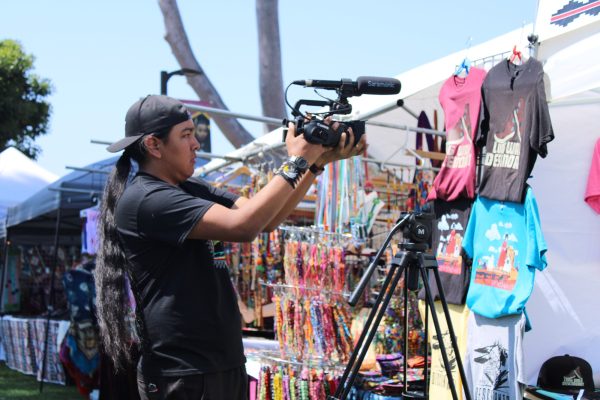
Gatewood enjoys Notah’s content, finding it intriguing and funny.
With a lot of his comedic content and humor being improv, Notah says he films whatever first comes to mind. Pulling out a fake $100 bill, he reveals he came up with the skit idea earlier in the day.
For this comedy segment, Notah approaches vendors, asking if they would rather take the $100 bill or get a free video promotion of their business.
The apparel shop owner happily chooses the money, causing him and Notah to laugh.
Regardless, Notah films a promotional video anyway to give a shout-out to Native-owned businesses.
Clutching his 4K camera to keep it steady, he sways from side to side, getting different angles of the shirts that display Native American symbols, and zooms in on the business name, Descendants.
“His content is more modernized and meets the criteria for today’s digital world. It’s a good way to share the culture,” Gatewood said.
Additionally, Native American dancer and singer, Little Hawk Crump, 26, said Notah’s content makes him feel culturally connected because the humor shows how Natives act with one another.
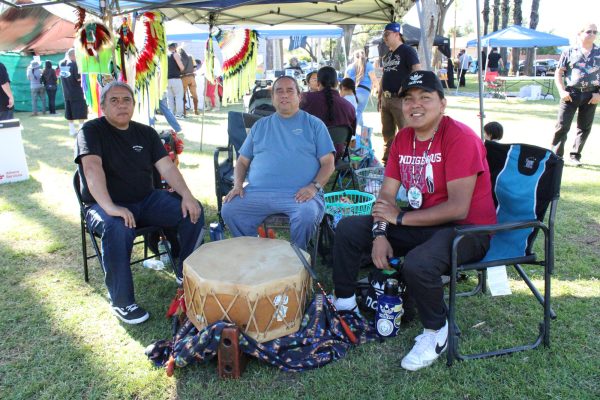
“People get more of an insight to how we are when we’re around each other. We’re just like everyone else,” Crump said.
Notah’s content also heavily focuses on what it means to be an urban Native. Also known as a Native American who grew up in an urban or city area.
The one thing they all have in common is feeling disconnected from their culture.
Through interviews he posts on Instagram, TikTok, and his podcast “Catching Up with Cousins,” Notah’s variety of guests allows other Natives to see that their struggle is not silent.
Adding his hint of comedy, namely jokes, Notah says certain topics that feel uncomfortable are OK to laugh about. It helps bring a positive awareness to the situation.
Due to his lighthearted attitude, 21-year-old Native American dancer, Caitlin Ashmore views Notah as an influencer for Native youths.
“A lot of natives who grew up in the city feel disconnected from their culture, but in reality, they’re with us. He gives inspiration to being proud of both sides,” Ashmore said.
Notah hopes his journey as a content creator only goes up from where he is now.
Sharing stories, highlighting businesses and advocating on behalf of the heritage in order to make upcoming generations feel they know at least a little about their culture is his dedication as a content creator.
“People don’t know about it, I want to push the culture out there. That way they have some slight idea about it,” Notah said. “I want to let them know they have a history.”




